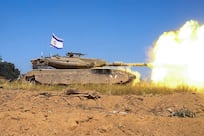When we arrive in a new city, the first thing we do is start to move around. I may spend the week before trawling through the guidebooks and drawing up lists of what we ought to see and do. Very quickly, however, the list is abandoned. My kids aren't interested in ticking off the top ten sights. They just want to bump about in whatever unusual transport the destination offers. Last week I mentioned the tuk-tuk rides we'd taken in Kandy, Sri Lanka - far more memorable than the visit to the Temple of the Sacred Tooth. Tuk-tuks win as my family's number one vehicle. In fact there are quite a few places where the way to get about has dwarfed any historic cathedral or world-class art collection - waterbuses in Venice, minibuses in India, steam trains in China, bicycles with baskets in Copenhagen, for example. Who cares that the Palazzo Grass was shut by the time we arrived when we went there by waterbus? When someone asks the kids what they did on their holiday, they usually reply, "We went on a cable car," or, "We hired bikes with boxes in the front for us to sit in." It's the trotting about that counts - the more long and winding the better - rather than where we're actually heading.
It was the transport in Georgetown, Penang, that made it such an appealing place for the kids. In Sri Lanka tuk-tuks are motorised. In Malaysia they're usually driven by a bicycle attached to the side of the car. But in Georgetown, the trishaws have a sun-hooded, two-person carriage perched in front of the cyclist. The views are better than from inside a tuk-tuk but the ride has the same promise of slight risk. Us adults don't like to be crushed and bounced about. The kids are quite the opposite: the more uncomfortable the ride the more times they want to do it.
Staying at the Cheong Fatt Tze Mansion, a 19th-century Chinese mansion with fountains and fish ponds in the inner courtyard and trishaws lined up outside, not once did the seven-year-old twins wake up and ask where we were going. They'd skip down the mansion's steps and look for Ajib, our regular trishaw driver (if you use local transport, you meet local people). Then we'd set off, me still determinedly clutching my list of sights that we really ought to at least look at. Somehow, it never happened. I suspect Ajib was in cahoots with the kids, who must have asked him to take the longest route to anywhere I mentioned, hoping we'd never reach Fort Cornwallis or the clanhouse Khoo Kongsi.
So my family's memory of Georgetown is not of mighty monuments or gold-encrusted temples. It's of the heat rising from the ground just below and the sweet waft of the coconut pancakes on the stalls that were close enough to grasp from Ajib's trishaw carriage. And of my crumpled, useless list. The Birkett family stayed at Cheong Fatt Tze Mansion (www.cheongfattzemansion.com). More information about travelling to Malaysia is available from Tourism Malaysia @email:www.tourism.gov.my
dbirkett@thenational.ae




